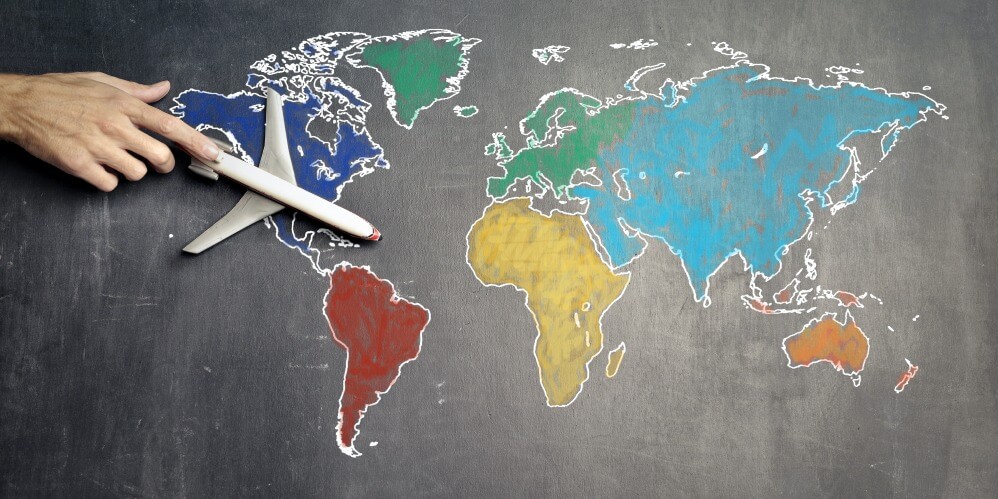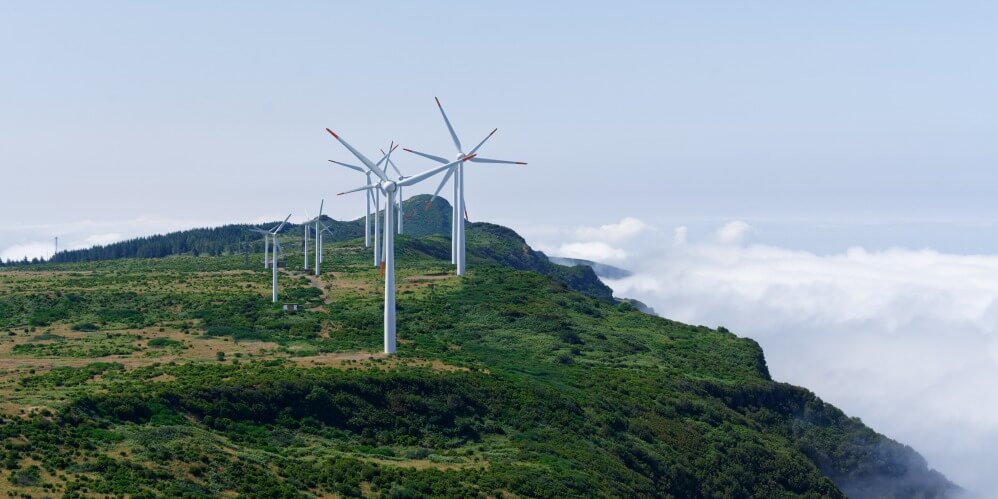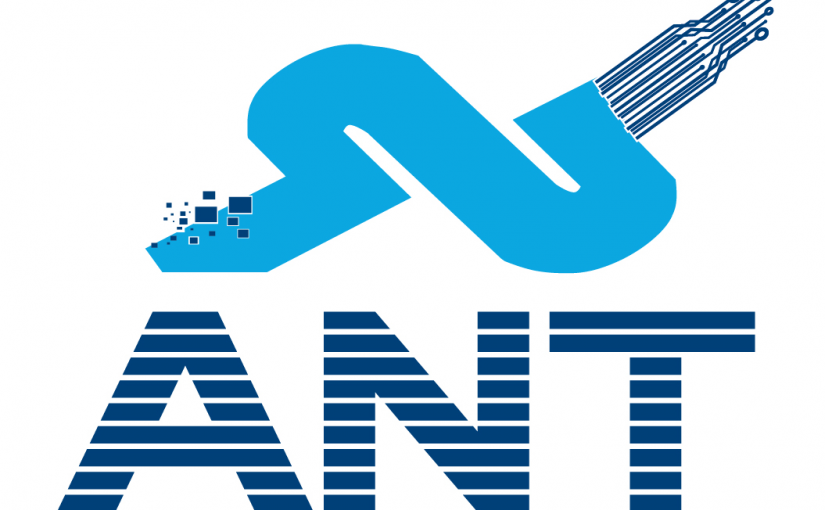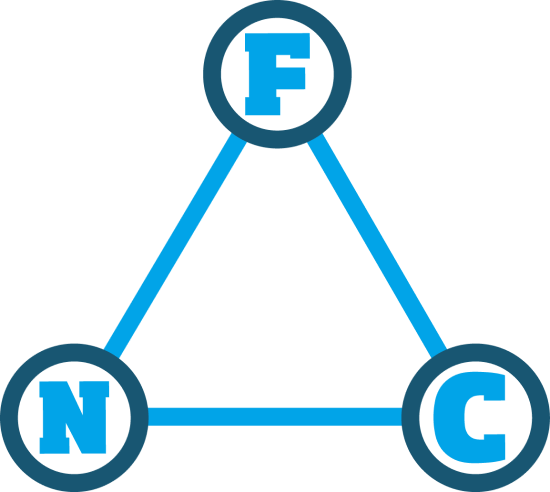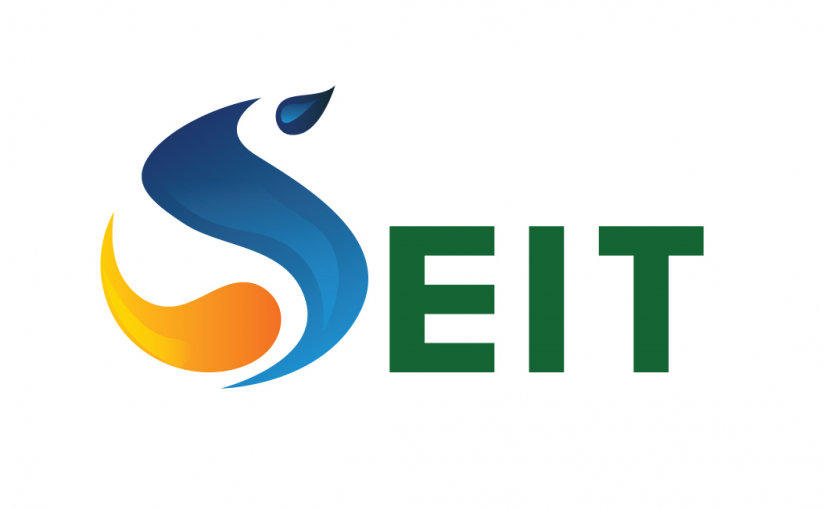
Volume List
IJTEE
Volume-20 (2023) Volume-19 (2022) Volume-18 (2021) volume-16 (2020) volume-17 (2020) volume-15 (2019) volume-13 (2018) volume-14 (2018) volume-12 (2017) volume-10 (2016) volume-11 (2016) volume-09 (2015) volume-07 (2014) volume-08 (2014) volume-06 (2013) volume-04 (2012) volume-05 (2012) volume-03 (2011) volume-01 (2010) volume-02 (2010)JTTM
volume-04 (2023) volume-03 (2021) volume-02 (2020) volume-01 (2019)JUSPN
volume-20 (2024) volume-18 (2023) volume-19 (2023) volume-16 (2022) volume-17 (2022) volume-14 (2021) volume-15 (2021) volume-12 (2020) volume-13 (2020) volume-11 (2019) volume-10 (2018) volume-08 (2017) volume-09 (2017) volume-07 (2016) volume-06 (2015) volume-05 (2014) volume-04 (2012) volume-02 (2011) volume-03 (2011) volume-01 (2010)SWES
volume-09 (2017) volume-08 (2016) volume-07 (2015) volume-06 (2014) volume-05 (2013) volume-04 (2012) volume-02 (2011) volume-03 (2011) volume-01 (2010)Latest Articles of IJTEE
Analysis and Sensitivity Studies on Thermoacoustic Engine Stack Temperature Profile Development
IJTEE, Volume-20 , Issue 1 (2023), PP 35 - 39
Published: 12 Oct 2023
DOI: 10.5383/ijtee.20.01.006
by Timileyin Aworinde, Alfiya Simran, Isam Janajreh from Mechanical Engineering Department, Khalifa University of Science and Technology, Abu Dhabi, United Arab Emirates
Abstract: Thermoacoustic engines are devices that convert thermal energy to acoustic energy using the Stirling cycle principle. They have wide importance in refrigeration and power generation, therefore there has been intensified research in this area. High focus has particularly been on exploring ways to improve the efficiency of the thermoacoustic engine, the non- linearity of the temperature profile developed across the stack of the engine poses a hindrance to the efficiency of the engine because the thermal gradient across the stack greatly affects the performance of the engine. This work therefore investigates possible pathways for improving the linearity of the temperature gradient across the stack. Two methods of heating the engines are investigated, namely top heating and side heating. For the former the heat is supplied externally at the top of the resonator while in the latter is done internally at the sides of the stack. Different stack materials and fluid medium are also varied to observe their influence on the temperature gradient across the stack. The results of the conducted analysis show that the internal heating condition has a higher tendency to produce a linear temperature gradient across the stack compared to the top heating. The variation of stack materials shows that the linearity of the temperature gradient of the stack increases with the thermal conductivity of the stack materials as materials with very high thermal conductivities (e.g., diamond) produced a perfectly linear temperature gradient across the stack. For the fluid medium, it is also seen that the linearity of the temperature gradient across the stack improves with increase in specific heat and thermal conductivity of the fluid medium with helium giving the most linear gradient of all the medium investigated. read more... read less...
Keywords: Thermoacoustic engine, thermoacoustic refrigerator, stack heating, stack materials, CFD
Thermal Catalysis Effects of Ca(NO₃)₂, Mg(NO₃) ₂, KNO₃, and Fe(NO₃)₃ on Olive Mill Solid Waste
IJTEE, Volume-20 , Issue 1 (2023), PP 29 - 33
Published: 12 Oct 2023
DOI: 10.5383/ijtee.20.01.005
by Islam Alkahder and Reyad A. Shawabkeh from Chemical Engineering Department, University of Jordan, Amman, Jordan
Abstract: Thermogravimetric Analysis - Differential Scanning Calorimetry (TGA-DSC) was employed in this study to investigate the thermal characteristics of olive mill solid waste (OMSW) both alone and in conjunction with six different compositions of Ca(NO₃)₂, Mg(NO₃)₂, KNO₃, and Fe(NO₃)₃. Emphasis was placed on assessing the impact of these compositions on the thermal behavior and heat flow. The analyses of TGA–DSC for the seven samples, conducted at a 10 K/min heating rate, revealed that the thermal decomposition of the OMSW occurred in three stages corresponding to the removal of water, devolatilization, and the formation of bio-char. Particularly noteworthy was the observation of complete combustion events between approximately 155°C and 240°C for four samples with distinct compositions during TGA testing. These findings underscore the significant influence of nitrate salt compositions on the thermal behavior of OMSW. The insights derived from this study contribute to the optimization of waste-to-energy processes and the refinement of thermal treatment protocols for sustainable OMSW management. read more... read less...
Keywords: Thermogravimetric Analysis, Differential Scanning Calorimetry, Olive mill solid waste, Thermal behavior
Optimizing Gas Turbine Performance: Influence of Angle of Attack and Mist Cooling
IJTEE, Volume-20 , Issue 1 (2023), PP 21 - 28
Published: 12 Oct 2023
DOI: 10.5383/ijtee.20.01.004
by Omar Nasro, Said ELTurk, Isam Janajreh from Department of Mechanical Engineering, Khalifa University of Science and Technology, Abu Dhabi, UAE
Abstract: This work presents a comparative study of the flow over a gas turbine blade aimed at enhancing turbine performance. The study focuses on determining the optimal angle of attack of the fluid and implementing internal turbine blade cooling. Computational Fluid Dynamics (CFD) was employed under varying parameters, including fixed and rotating turbine blade conditions. Precise analysis of temperature and pressure coefficient distributions, as well as torque, enthalpy, thermodynamic power, flow velocity, and mass flow rate were conducted for each setup. Results indicate that the optimal flow attack angle is 60°. Subsequently, mist cooling was simulated as an internal cooling method at the optimum attack angle to examine its effect on blade temperature distribution. Simulation outcomes suggest that implementing mist cooling enhances temperature distribution over the blade and improves turbine performance. read more... read less...
Keywords: Turbine Blades, Turbine Cooling, Gas Turbine, Internal Cooling, Mist Cooling, CFD
Single plate analysis of thermoacoustic refrigerator
IJTEE, Volume-20 , Issue 1 (2023), PP 13 - 19
Published: 07 Feb 2023
DOI: 10.5383/ijtee.20.01.003
by Omar Al-Mufti and Isam Janajreh from Department of Mechanical Engineering, Khalifa University of Science and Technology, Abu Dhabi, UAE
Abstract: Thermoacoustic refrigerator (TAR) or heat pump is a device that uses acoustic sound to pump heat from a lower temperature reservoir. The most distinct feature of thermoacoustic systems is that they do not have moving parts, which makes them reliable with no to low maintenance. TAR can be driven using thermoacoustic engine (TAE) in which the later can be sustainably operated utilizing waste heat or concentrated solar. Also, in contrary to conventional refrigeration methods, TARs do not use environmentally harmful gasses. In this work, a high-fidelity localized model is developed to simulate the flow in a standing wave (straight tabular) thermoacoustic refrigerator. In this localized analysis a subsection domain that runs through two stack halves and stretches nearly 1.5 stack length at each side is considered. The acoustic waves were simulated using oscillating walls at the two domain limits at a given resonance frequency. The model compared favorably to previous experimental and numerical findings. The analysis was done for drive ratios in range of 0.28% to 2%. A 3.2 oC temperature difference is produced at the 2% drive ratio compared to 0.5 oC at the 0.28% ratio. Higher difference can be achieved at higher drive ratio and also larger stack length. read more... read less...
Keywords: Numerical modeling, Thermoacoustic, Refrigerator, Drive ratio, CFD
Latest Articles of JTTM
Traffic Management with Intelligent Transportation Systems
JTTM, volume-04 , Issue 2 (2023), PP 71 - 74
Published: 21 Dec 2023
DOI: 10.5383/JTTM.04.02.006
by Albert Curri from Student, Brussels, Belgium, 1080 University of Hasselt
Abstract: The present study investigates the function of Intelligent Transportation Systems (ITS) in the efficient management of traffic. Information and communication technology has completely changed how we view and handle traffic. This article explores several ITS topics, such as automated number plate recognition, speed cameras, variable message signs, and traffic signal control systems. It talks about how these technologies can be used to monitor traffic in real time, forecast traffic patterns, and make well-informed decisions to reduce congestion. The advantages are also highlighted in the study, including increased environmental sustainability due to lower emissions, short travel times, and improved road safety. It also discusses the difficulties in putting ITS into practice, like the high cost of installation, privacy issues, and the requirement for uniformity. The paper`s conclusion highlights how it intelligent transportation systems have the potential to revolutionize urban mobility and that it needs to be done more research in order to remove the current obstacles to its widespread deployment. read more... read less...
Keywords: ITS- Intelligent Transportation Systems, AI- Artificial Intelligence, ML- Machine learning, IoV- Internet of Vehicles, ATIS- Advanced Passenger Information System, ATMS- Advanced Traffic Management Systems, AVCS-Advanced Vehicle Control Systems.
Examining the Relevance of Citizen Participation in Sustainable Urban Mobility
JTTM, volume-04 , Issue 2 (2023), PP 65 - 70
Published: 21 Dec 2023
DOI: 10.5383/JTTM.04.02.005
by Kizito Lule Ssentongo from Hasselt University, Hasselt, Belgium, 3500
Abstract: This paper delves into the crucial role that citizen participation plays in the advancement of sustainable urban mobility. It introduces the overall concept of sustainable development and how transport plays an important role in the 3 axes of sustainability (environmental, social, and economic). Further on, the paper sets the context by highlighting the nuanced differences between citizens and stakeholders and exploring the different approaches to citizen participation. The paper also underscores the significance of citizen participation in shaping sustainable mobility, and provides an outlook into the challenges associated with citizen participation and how to overcome them. The paper also provides insight into the successful implementation of citizen participation initiatives by highlighting several cases in Europe, specifically under the DYN@MO project. The conclusion provides an encapsulation of key findings and suggests potential areas for future research. read more... read less...
Keywords: Sustainability, Transport, Citizen Participation
Citizen Participation in Traffic Safety: Challenges and Strategic Solutions
JTTM, volume-04 , Issue 2 (2023), PP 55 - 63
Published: 21 Dec 2023
DOI: 10.5383/JTTM.04.02.004
by Obinna Duruanyanwu from Hasselt University, Hasselt, Belgium, 3500
Abstract: The paper aimed to determine the obstacles that impede citizens' involvement in traffic safety initiatives and suggest approaches to mitigate them. The authors' substantial community-based experiences, a review of pertinent literature, and community-based research with important traffic safety stakeholders were the sources of the information. There were found to be five major obstacles to citizen participation. Personnel and planning issues are the two categories into which they are divided. The former covers lack of policy, lack of expertise, and reasons why people are frequently unwilling to get part in traffic safety efforts. The latter consists of unsuitable policy evaluation criteria, unsuitable policy foci, and unsustainable practices. It was determined that the obstacles to public involvement in traffic safety are comparable globally apply to a wide range of promotion interventions besides road safety. Ensuring that the right actions are done to maximize the chance of citizen participation requires awareness of the obstacles and knowledge of how to overcome them. read more... read less...
Keywords: Citizen’s participation, traffic safety, community responsibility, safety policy, sustainability
Shortage of Truck Drivers: The Genesis and Way Forward
JTTM, volume-04 , Issue 2 (2023), PP 49 - 54
Published: 21 Dec 2023
DOI: 10.5383/JTTM.04.02.003
by Kwaku Forkuo from Hasselt University, Hasselt, Belgium, 3500
Abstract: The trucking industry is facing a critical shortage of drivers, posing a significant threat to the supply chain and the overall economy. This study explores the causes of the driver shortage, looking at how changes in regulations and demographic patterns have impacted the situation. It also explores the difficulties the trucking industry experiences in recruiting and maintaining drivers, stressing the adverse effects of long hours, poor pay, and unfavourable working conditions on the drivers' quality of life. This paper delves into the genesis of this driver shortage, examining the demographic trends and regulatory changes that have contributed to this challenge. It also explores the trucking industry's challenges in attracting and retaining qualified drivers, highlighting the impact of long hours, low pay, and difficult working conditions on their quality of life. The paper concludes by providing recommendations for policymakers and industry players to address the driver shortage. It advocates for investments in infrastructure improvements and supports initiatives to promote the trucking industry as a career path. The trucking industry can address the driver shortage and ensure long-term sustainability by implementing these recommendations. read more... read less...
Keywords: Reliance, Significantly, Onboarding, Transportation, demographic, Reliance
Latest Articles of JUSPN
Sensitivity Analysis on the Impact of Candidate Transit Projects on the Network Travel Time Evaluated by a Travel Demand Model
JUSPN, volume-20 , Issue 1 (2024), PP 09 - 22
Published: 23 Jan 2024
DOI: 10.5383/JUSPN.19.01.006
by Camille Kamga, Patricio Vicuna, Kyriacos Mouskos from University Transportation Research Center Region 2, New York City, New York, USA and Transportation System Analyst, Nicosia, Cyprus
Abstract: This research aimed to address the Transit-Network Design Problem (NDP) where the Upper Level optimizes the vehicles' Network Travel Time (NTT) subject to a Budget constraint and subjects to the Lower Level that estimates the vehicles' NTT based on a Travel Demand Model (TDM). The study objective is to explore the impact of a naïve model of the more complex Transit-NDP, where stakeholders propose a priori a group of potential transit projects, including bus lines, tramways, light rail systems, and rail networks. The experimental setup involved a sensitivity analysis of budget-demand combinations for two test networks – where the Halle and the Karlsruhe test networks have 37 and 48 candidate transit projects, respectively. A complete evaluation enumeration of each budget-demand combination was conducted when it was computationally feasible, and a sampling evaluation set of 100 for the remaining evaluation test combinations. The Halle network exhibits a 47.6% NTT reduction for the base demand and a 50.8% reduction for the 160% demand level with all transit projects activated. The Karlsruhe Network exhibits an NTT reduction ranging between a base demand, resulting in a 39.7% reduction, whereas a 160% demand results in a 52.4% reduction with all transit projects activated. In both networks, a set of candidate transit projects were members of the best solution in all test runs. The sensitivity analysis demonstrated that some candidate transit projects selected at lower budget-demand combinations were not necessarily included at the best solutions of higher budget-demand levels. Overall, 18,432 test runs were conducted for the Halle network and 26,704 test runs for the Karlsruhe network, which required a total of 222 days. This analysis demonstrated the computational feasibility of conducting such a large set of experiments. In addition, the resulting dataset of the enumeration and sampling method was utilized to develop a Random Forest Regression (RFR) model, which was then utilized within a set of metaheuristics to solve this specific Transit-NDP. read more... read less...
Keywords: Transit-NDP, Travel Demand Model, Random Forest Regression Model
Sharing Digital Solutions with the Public for a Climate-Friendly Smart City District via an Ecosystem Map: Concepts and Solutions
JUSPN, volume-20 , Issue 1 (2024), PP 01 - 08
Published: 23 Jan 2024
DOI: 10.5383/JUSPN.19.01.005
by Frank Elberzhager, Anna Schmitt, Sven Storck, Stefan Schweitzer from Fraunhofer IESE, Germany, Fraunhofer-Platz 1, 67663 Kaiserslautern
Abstract: Climate change and its consequences are currently a very pressing topic. This is also true for cities. Digital solutions can be helpful in this regard. They can be used, for example, to inform citizens and provide digital services aimed at fostering climate-friendly behavior. In the EnStadt:Pfaff research project, we are developing a climate-friendly smart city district. Our focus in the project is on digitalization, with the main goal being the implementation of a digital ecosystem providing apps to the people of the district, which is currently under construction. To date, we have developed several digital solutions with different technology readiness levels. One major issue we have faced, however, has been how to inform the public about these solutions and share our ideas with them. We decided to do this in various ways, e.g., via a classical project webpage, events, and videos. In order to have one main entry point for the public to explore our solutions, we have developed a so-called ecosystem map. Four digital solutions are presented in this map to show what kind of digital solutions might be part of the future digital ecosystem in the smart city district. In this paper, we report on how we created the digital map, provide the four digital solution examples shown on the map, and present feedback we received regarding our solutions. This has also led to ideas for the future development of the map. We share three basic ones in this paper. read more... read less...
Keywords: Smart City, Sustainability, Digitalization, Information Sharing, Digital Ecosystem Map
PATTERN DETECTION IN MARITIME TRAFFIC FOR SAFETY ANALYSIS USING DEEP LEARNING
JUSPN, volume-19 , Issue 1 (2023), PP 33 - 38
Published: 06 Dec 2023
DOI: 10.5383/JUSPN.19.01.004
by Bill Karakostas from Independent Researcher. Manchester, UK
Abstract: The paper presents a novel approach for the detection of ship collision risks, by classifying images of ship traffic constructed from AIS data, using deep learning techniques. In this approach, the risk level of ship traffic patterns, according to maritime safety rules, is calculated, using a convolutional neural network trained on ship traffic image data. Experiments with the analysis of real ship traffic data from the English Channel are reported. read more... read less...
Keywords: AIS, COLREG, maritime safety, autonomous ships, computer vision, CNN, Deep Learning, Keras
Exploring Privacy Threats in Connected and Autonomous Vehicles: An Analysis
JUSPN, volume-19 , Issue 1 (2023), PP 25 - 32
Published: 06 Dec 2023
DOI: 10.5383/JUSPN.19.01.003
by Badreddine Chah, Alexandre Lombard, Anis Bkakria, Reda Yaich, Abdeljalil Abbas-Turki from CIAD UMR 7533, Univ. Bourgogne-Franche-Comté, UTBM, F-90010 Belfort, France and IRT SystemX, Palaiseau 91120, France
Abstract: This paper conducts a privacy threat analysis of connected and autonomous vehicles to address the growing concerns regarding the privacy of sensitive information collected by these vehicles. By following the LINDDUN GO methodology, this paper aims to identify privacy risks in the overall connected and autonomous vehicles architecture based on formal privacy requirements. The proposed analysis focuses on a specific use case, assisting manufacturers in implementing privacy requirements and enhancing privacy protection. This research provides valuable insights into potential risks and vulnerabilities, contributing to the development of privacy-respecting connected and autonomous vehicle systems. read more... read less...
Keywords: Privacy, Security, Threat Analysis, Connected and Autonomous Vehicle, Privacy engineering framework
Latest Articles of SWES
Key Issues/Challenges for Inland Water Transportation Network in India
SWES, volume-09 , Issue 2 (2017), PP 75 - 81
Published: 13 Nov 2017
by S. Praveen, J. Jegan from M.E (Construction Engineering & Management), Department of Civil Engineering, James College of Engineering & Technology, Nagercoil, Tamil Nadu, India, Professor & Head, Department of Civil Engineering, University College of Engineering Ramanathapuram, Tamil Nadu, India
Abstract: The authors explore transport and trade as two broad service sectors of inland water resources. An attempt is made to find out the key issues and challenges from this sector with the evolving understanding of Indian inland water transportation system. The paper explains the background of inland water transport sector in India along with the discussion of issues and challenges faced by the same. The authors state that co-operation and co-ordination between inter-state governments is a strategic element to expand the network of inland water transport system in India beyond state boundaries. Conclusively, the prospect of inland navigation looks promising, wherein issues on infrastructural gaps and institutional support are addressed suitably. read more... read less...
Keywords: Inland Water, Navigation, Transportation, National Waterways
Wastewater Treatment Analysis, Technology and Challenges in Sweden
SWES, volume-09 , Issue 2 (2017), PP 67 - 74
Published: 18 Oct 2017
by Otu, Ubong Etop from Department Of Marine Biology, Akwa Ibom State University P.M.B 1167, Uyo, Nigeria
Abstract: Wastewater treatment is an efficient technique that increases the reclamation and reuse of wastewater for other productive uses, thereby, reducing the demand for freshwater resources, conservation of aquatic habitat, and sustainable utilization of water resources. Concerns for wastewater in Sweden began in the 1930s with only mechanical treatment but efficiently implemented in the 1960s as a result of significant eutrophication observed in open waters such as the Baltic Sea. Although prevailing wastewater treatment is fairly efficient, there is need to upgrade and improve existing treatment facilities (constructed in the 1970s) to mitigate potentially degradation of hygienic conditions due to the estimated increase in Swedish population. Thus, this paper will critically analyse prevailing treatment of wastewater in Sweden, the technology used and possible challenges encountered in the process. Small scale treatment of wastewater particularly practiced for dwellings not connected to municipal treatment plant will be discussed including sludge management in Sweden. The report further presented the significant issues including regulations, challenges, health hazards and constraints associated with wastewater treatment and reclamation. In addition, background information relating to potential technology to meet future wastewater treatment in Sweden were highlighted because current wastewater treatment facilities were constructed in the 1970s to provide services to Swedish population at that time. read more... read less...
Keywords: Water, Wastewater treatment, Grey wastewater, Sludge Management
Soil and Water Conservation in Thika-Chania catchment, Kenya
SWES, volume-09 , Issue 2 (2017), PP 59 - 65
Published: 04 Sep 2017
by Gathagu John Ng’ang’a, Mainya Johnstone Isiah, Oduor Brian Omondi, Khaldoon A. Mourad from Pan African University Institute for water and Energy Sciences, Tlemcen, Algeria, Center for Middle Eastern Studies, Lund University, Lund, 22100
Abstract: Soil and water conservation measures are widely practiced in Kenya to tackle the degradation of the ecosystems and to improve land productivity. Local government and NGOs have developed programs and campaigns about soil and water conservation measures. The aim of this study is to assess the need for soil and water conservation measures in Thika- Chania catchment by conducting a household survey using QuickTap Survey software. A total of 200 respondents were successfully interviewed and results analyzed in SPSS program. GIS tools were also used to do a classification of slopes in the study area. Results indicate that more than 90% of the people in the catchment area are farmers. In the recent years, 50% of the respondents have noted a decline in the vegetation. During the rain seasons, the intensity of color in the local rivers due to sediments have been observed to increase by 75% of the respondent while 9% said there was no change. More than 70% of the respondents indicated that the water levels have been on the declining trend especially during the low flows. Terraces and grass strips were the common soil and water conservation measures although some of them were severely degraded. We concluded that there is an immediate need to implement soil and water conservation measures in the catchment to enhance and restore the optimum functioning of the ecosystems. Capacity building and frequent extension services are needed to increase awareness on the impacts of the respective conservation methods. Incentives programs need to be established to encourage more farmers to participate in conserving and protecting their lands from degradation. read more... read less...
Keywords: Baseline survey, soil and water conservation, capacity building, degradation.
Modelling Water Demand and Efficient Use in Mbagathi Sub-Catchment Using Weap
SWES, volume-09 , Issue 1 (2017), PP 49 - 57
Published: 03 Apr 2017
by J. Nyika, G.N. Karuku, and R. N. Onwonga from Department of Land Resource Management and Agricultural Technology, Faculty of Agriculture, University of Nairobi, P.O. Box 29053-00625, Nairobi, Kenya
Abstract: Water systems have complex component interactions necessitating development and evaluation of management amidst uncertainties of climate and constrained natural resources. Conceptual models such as WEAP when used are effective planning and management tools as they forecast future effects of resource use efficiency at sub-catchment level using existent hydrological and climate data thereby acting as corrective measure to poor resources management. This study aimed at using WEAP model to forecast demand and analyze scenarios on efficient water use in Mbagathi subcatchment. WEAP model schematic was set to develop current and reference scenarios. Parameters used to run WEAP model were a GIS map of the sub-catchment, climate data from Kenya Meteorological Department at Dagorretti Corner Station, hydrological and water demand data from WRMA databases. High population growth and prolonged drought were predicted to increase water demand while reuse though not practised, was found by the model to be the most effective approach to manage unmet demands as compared to reduced conveyance losses and increased reservoir capacity. The study concluded that water reuse through exploitation of wastewater could be a viable solution to Mbagathi sub-catchment's water problems. read more... read less...
Keywords: water problems, necessitating development, evaluation of management, climate and constrained natural resources
We use cookies to provide a better browsing experience. You can block or delete cookies through the tools of your browserd.
2021 IASKS. All Rights Reserved.




